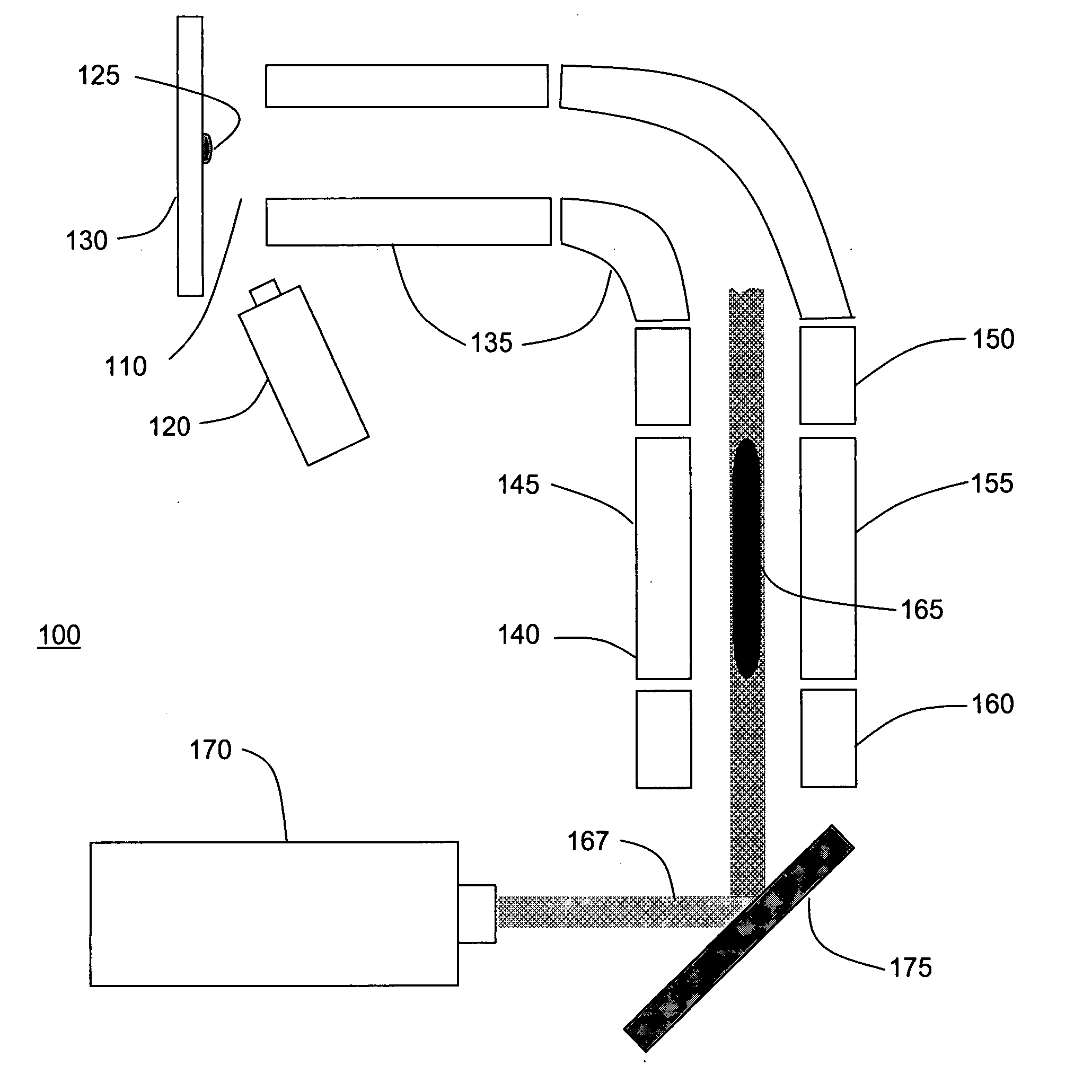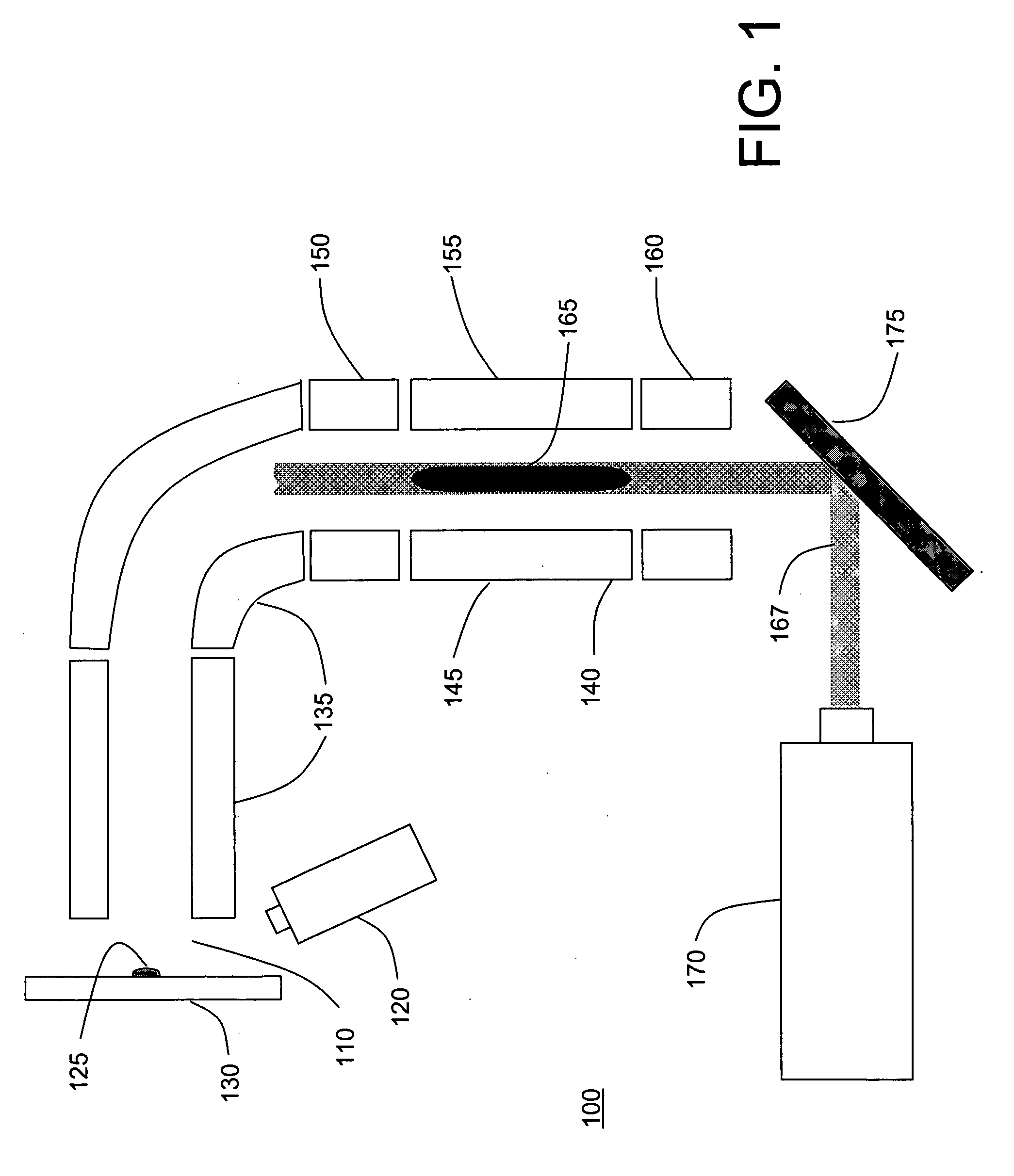Reduction of chemical noise in a MALDI mass spectrometer by in-trap photodissociation of matrix cluster ions
a matrix cluster ions and chemical noise technology, applied in the field of mass spectrometers, can solve the problems of chemical noise in the mass spectral, particularly problematic chemical noise, cleaning of the maldi substrate surface, etc., and achieve the effect of reducing or eliminating the chemical noise associated with matrix cluster ions and less efficiently absorbing
- Summary
- Abstract
- Description
- Claims
- Application Information
AI Technical Summary
Benefits of technology
Problems solved by technology
Method used
Image
Examples
Embodiment Construction
[0012]FIG. 1 is a symbolic depiction of a mass spectrometer system 100 configured in accordance with a first embodiment of the invention. A MALDI source 110 is provided to generate analyte ions from a sample 125. MALDI source 110 includes a laser 120 that emits a pulsed laser beam at a wavelength strongly absorbed by the matrix material. The pulsed beam is directed onto sample 125 deposited on a sample plate 130. Sample plate 130 may be mounted to a positioning mechanism that may be moved within the plane of sample plate 130 to align the laser beam with a selected region of the sample. Sample 125 is typically prepared by mixing a solution of the analyte substance with a matrix substance such as (without limitation) DHB (2,5-dihydrobenzoic acid) or α-CHA (α-cyano-4-hydroxycinnamic acid). The solution is then deposited onto a target area of the sample plate, and the solvent is evaporated, leaving a sample spot of co-crystallized analyte and matrix molecules. Alternatively, a tissue sa...
PUM
 Login to View More
Login to View More Abstract
Description
Claims
Application Information
 Login to View More
Login to View More - R&D
- Intellectual Property
- Life Sciences
- Materials
- Tech Scout
- Unparalleled Data Quality
- Higher Quality Content
- 60% Fewer Hallucinations
Browse by: Latest US Patents, China's latest patents, Technical Efficacy Thesaurus, Application Domain, Technology Topic, Popular Technical Reports.
© 2025 PatSnap. All rights reserved.Legal|Privacy policy|Modern Slavery Act Transparency Statement|Sitemap|About US| Contact US: help@patsnap.com



